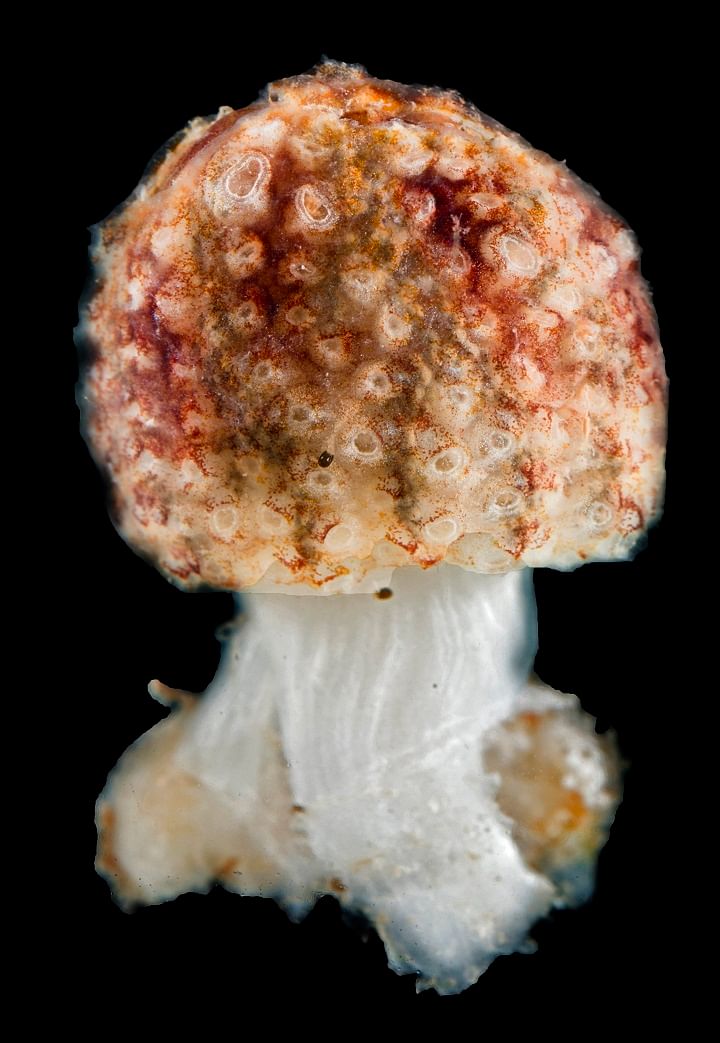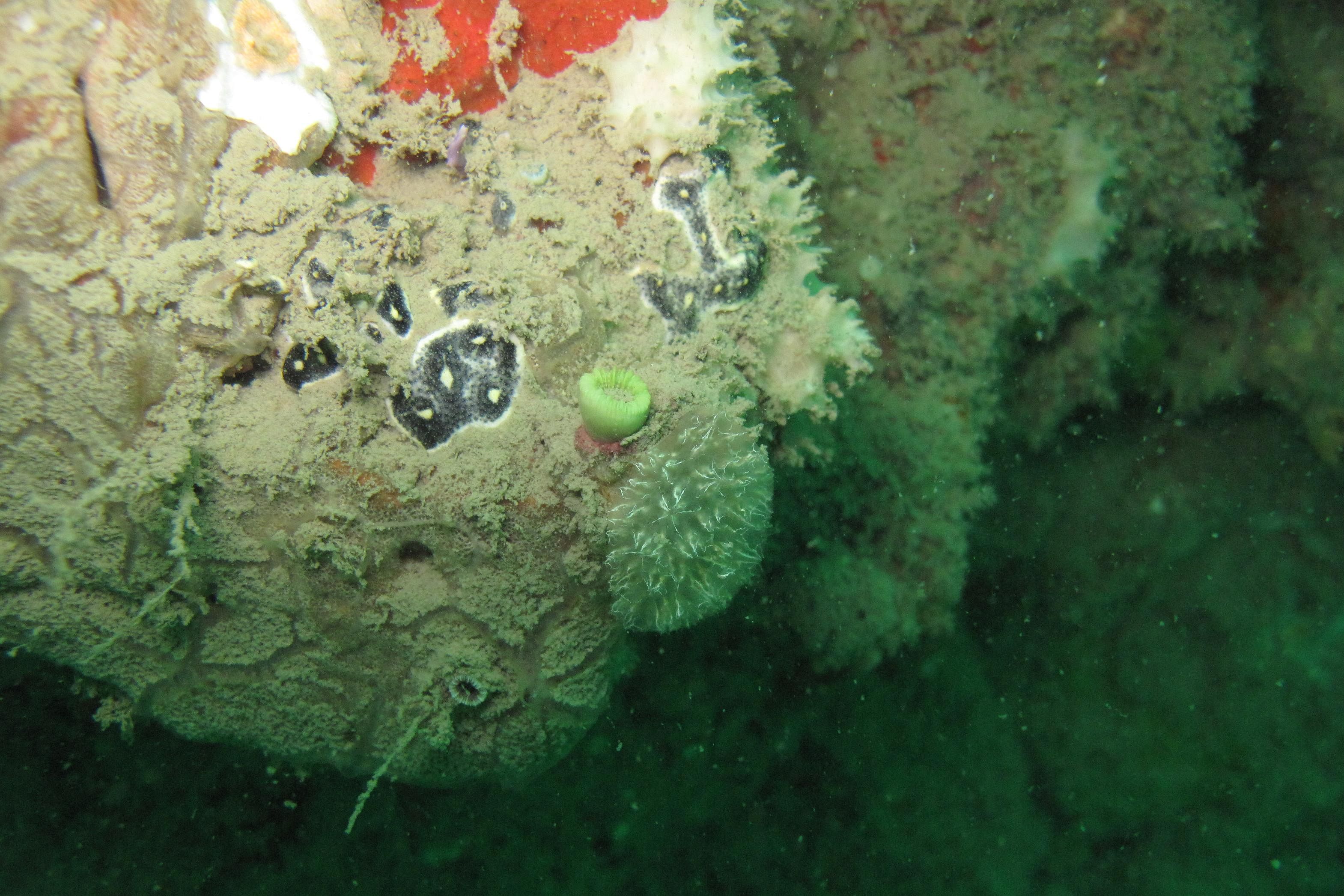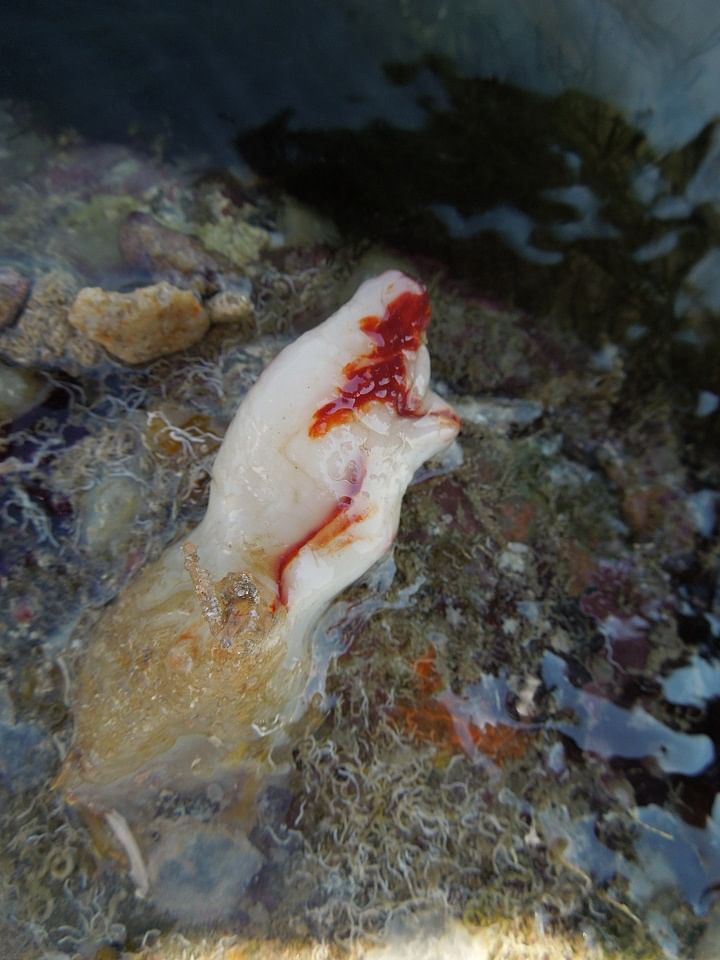Sea squirts - a distant cousin of humans, but without a backbone
Sign up now: Get ST's newsletters delivered to your inbox
Follow topic:
SINGAPORE - Boneless and fragile, these delicate, tube-like marine creatures that squirt water when disturbed cannot look more different than humans.
But these colourful ascidians, or sea squirts, which are often mistaken for corals or sea sponges, are known to be our closest invertebrate relative.
At larval stage, the primitive marine animal resembles a human at its five-week embryonic stage.
The sea squirt larva looks like a free-swimming tadpole and has a flexible skeletal rod, called the notochord. As the creature grows, it loses its "spine". The human embryo's rod, however, develops into a spine.
Humans and ascidians are classified as chordates, which refer to animals that possess the notochord at some point in their life cycle, said Ms Serina Lee, laboratory executive at the National University of Singapore's Tropical Marine Science Institute (TMSI).
"Ascidians have the same ancestor as us, which is the chordate ancestor, so they are our distant primitive cousin," added Ms Lee.
Coming in different shapes and textures, ascidians can be solitary animals that look like tubes or little bags, or exist in a cluster, where each bud is just a few centimetres or even millimetres long.
A colony can look like a mass resembling a bunch of grapes, or like a sheet over a hard surface. The sizes of colonial ascidians differ with species, but some can be up to 50cm wide.
They are found at intertidal zones that get exposed during low tide, all the way to the deep sea. They attach themselves to hard surfaces such as coral rubble, rocks, jetty posts and even on boats, as they grow and morph.
Dr Serena Teo, deputy director of research at TMSI, said: "Ascidians are found in many marine environments. And actually, once you know what to look for, you will realise that they are everywhere."
The solitary tube-shaped sea squirt, which can grow up to 10cm long, has two openings - one that acts as a mouth, and another to excrete waste. Its colourful body or outer covering may consist of cellulose and other proteins.
When touched or disturbed, the animal's muscles contract, squirting a strong jet of water.
"While handling 10cm-long ones, I've had a few good squirts in my face," Ms Lee quipped.
Although there are about 3,000 known ascidian species worldwide, many of them were found in Australia.

There are officially 58 known ascidian species in Singapore.
Little was known about the ascidians surrounding Singapore and the South China Sea until the Comprehensive Marine Biodiversity Survey in 2013, which took stock of the nation's marine life.
Dr Teo said: "In historical literature, there are maybe 20 records of ascidians. But we know when we go out to the field that they are everywhere. Just look under rocks. They are everywhere and they had no names."
During the three-week survey in 2013, hundreds of ascidians were collected from the southern islands, and 41 species were identified over the years.
Twenty-one of them were new records for Singapore, with six new records for the South China Sea region.
New records for a place refer to species that have been identified elsewhere before, but for the first time, are identified in that particular location.

Findings about the new records were published in the journal Zootaxa in February, and Ms Lee and Dr Teo are two of the paper's authors.
The paper stated that many samples from the survey remain unidentified. The paper's lead author, Dr Gretchen Lambert, who came to Singapore to support the survey, said: "This will surely increase the number of new records, and perhaps even new species."
Ascidians are also known to have medicinal properties, and some of them are used in anti-cancer drugs.

Recently, scientists have discovered that a compound from a particular ascidian found in the Mediterranean region can be used as an alternative for Remdesivir, an anti-viral used for Covid-19 patients who need low amounts of oxygen support.
The chemical compound extracted from the colonial ascidian species called Aplidium albicansis substantially more potent than Remdesivir, pre-clinical trials have found.
The St John's Island National Marine Laboratory has developed methods for rearing ascidians for scientists to work with. Since these creatures are humans' most primitive chordate relatives with basic cells and DNA, they are ideal animals to work with to understand different biological processes.
Ascidians are also considered delicacies in countries such as South Korea and Japan. The sea pineapple, a type of sea squirt, is grown and widely eaten in those countries.
Said Ms Lee: "I have seen ascidian sashimi on sale in a Japanese market here."

